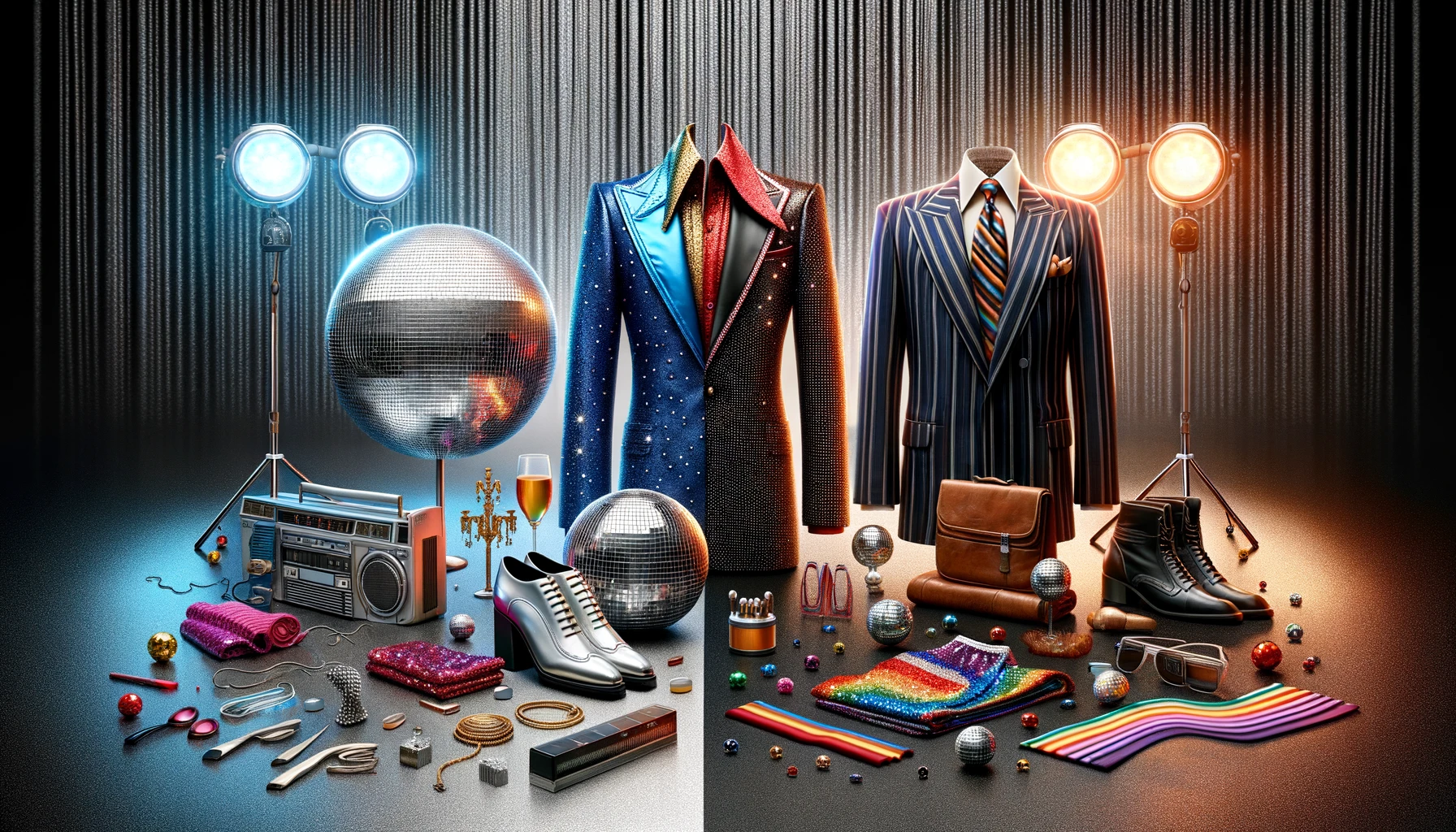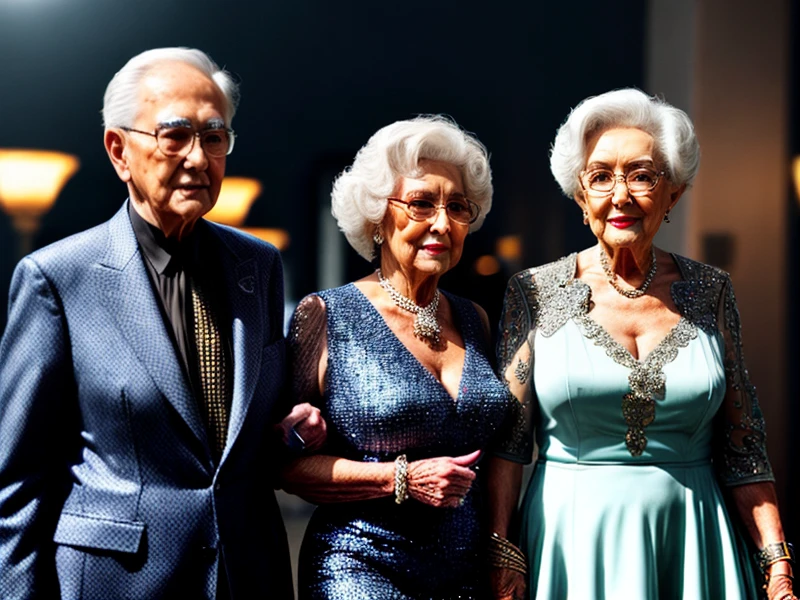Delving into the rich tapestry of fashion history is akin to embarking on a captivating journey through time, where each decade leaves an indelible mark on the ever-evolving landscape of style. In this exploration, we are drawn to the iconic styles of the 20th century. This was a period when fashion experienced a remarkable evolution, reflecting the cultural, social, and political changes of each era.
The 1920s, also known as the "Roaring Twenties", ushered in a new era of freedom and individuality in fashion. This transformative decade saw the rise of the flapper, a symbol of modernity and defiance against traditional gender norms. Flapper dresses, characterized by their dropped waistlines, loose silhouettes, and intricate beadwork, became emblematic of the era's spirit of rebellion and joie de vivre. Accompanied by cloche hats, T-strap heels, and strands of pearls, flapper fashion embodied the newfound freedom and exuberance of the Jazz Age.
As we move into the 1930s, Hollywood enters its Golden Age, a time marked by glamour, elegance, and escape from reality in fashion. With the arrival of sound in movies, Hollywood became a global cultural force, and its leading women set the standard for style and sophistication. Screen icons like Marlene Dietrich, Jean Harlow, and Greta Garbo epitomized the epitome of sophistication with their bias-cut gowns, tailored suits, and sleek hairstyles. The allure of Hollywood glamour captivated audiences worldwide, inspiring women to emulate the impeccable style of their silver screen idols.
In contrast to the opulence of the previous decade, the 1940s witnessed a shift towards practicality and austerity due to the onset of World War II. Wartime restrictions on fabric and resources necessitated a more utilitarian approach to fashion, giving rise to the concept of utility dressing. Women embraced functional yet stylish designs, such as shirtwaist dresses with practical pockets and high-waisted trousers that allowed for ease of movement. Despite the challenges of war, fashion continued to be an expression of resilience and resourcefulness, reflecting the indomitable spirit of that era.
As we reflect on these iconic looks from the 20th century, we are reminded of the transformative power of fashion in shaping the cultural zeitgeist of the time. From the carefree exuberance of the Roaring Twenties to the timeless elegance of Hollywood glamour, each decade offers a glimpse into the evolving tastes and aspirations of society. Join us as we continue our journey through the decades, exploring the vibrant tapestry of fashion history and celebrating the enduring legacy of style.
The Birth of Rock 'n' Roll Style and The Swinging Sixties
As we traverse further along the timeline of fashion history, we encounter the dynamic energy and vibrant creativity of the 1950s and 1960s. These decades witnessed seismic shifts in cultural attitudes and societal norms, which were reflected in the revolutionary styles that emerged during this time.
The 1950s marked the birth of rock 'n' roll and the advent of youth culture, paving the way for a new era of rebellion and self-expression in fashion. Iconic looks from this decade include the quintessential poodle skirts, which epitomized the wholesome femininity of the post-war era, and the rebellious cool of leather jackets worn by motorcycle gangs and rock 'n' roll rebels. Audrey Hepburn's iconic little black dress in "Breakfast at Tiffany's" encapsulated the timeless elegance and sophistication of 1950s style, while James Dean's rebellious charm and rugged denim jeans became synonymous with the burgeoning youth culture of the era.
The 1960s heralded the dawn of the Swinging Sixties, a period of unprecedented social change, cultural upheaval, and artistic experimentation. This decade was characterized by a spirit of liberation and revolution, as young people rejected the conventions of their parents' generation and embraced new forms of self-expression. The fashion of the 1960s reflected this sense of freedom and experimentation, with trends such as mini skirts, psychedelic prints, and go-go boots taking center stage. Icons like Twiggy and Mary Quant popularized the mod style, characterized by its bold geometric patterns, sleek silhouettes, and futuristic aesthetic. The Swinging Sixties was a time of boundless creativity and innovation in fashion, as designers pushed the boundaries of tradition and embraced new materials and techniques to create bold and dynamic looks that captured the spirit of the times.
As we delve into the iconic looks from the 20th century, the 1950s and 1960s stand out as defining moments in fashion history. From the rebellious cool of rock 'n' roll style to the exuberant energy of the Swinging Sixties, these decades continue to inspire and influence modern fashion, reminding us of the enduring power of style to reflect and shape the cultural landscape. Join us as we journey through the decades, exploring the rich tapestry of fashion history and celebrating the timeless allure of iconic looks from the past.

Disco Fever and Power Dressing
Continuing our exploration of iconic looks from the 20th century, we turn our attention to the flamboyant styles of the 1970s and the bold, assertive fashion of the 1980s. These decades were characterized by distinct aesthetic movements that reflected the social, cultural, and political currents of the time.
The 1970s was an era of disco fever and flamboyant self-expression. As the disco craze swept the globe, fashion became a form of escapism, with glittering disco outfits, platform shoes, and bell-bottoms dominating the dance floors. The iconic disco look was characterized by bold colors, shimmering fabrics, and figure-hugging silhouettes that exuded confidence and glamour. Jumpsuits became a wardrobe staple for both men and women, while wrap dresses and maxi skirts offered a more bohemian take on 1970s style. The era's fashion icons, from Diana Ross to Studio 54 regulars like Bianca Jagger, epitomized the glitz and glamour of the disco era, inspiring generations of fashionistas to embrace their inner disco diva.
As we transition into the 1980s, we enter the era of power dressing and bold, assertive fashion. The 1980s was a time of excess and opulence, characterized by bold shoulders, neon colors, and oversized accessories. Power dressing emerged as a sartorial symbol of female empowerment, with women embracing tailored suits, structured blazers, and statement-making ensembles that commanded attention in the boardroom and beyond. Icons like Madonna epitomized the bold and unapologetic style of the 1980s, pushing the boundaries of fashion with her provocative looks and fearless attitude. Leg warmers, fanny packs, and chunky jewelry became emblematic of the decade's fashion ethos, as individuals embraced a more-is-more approach to style.

As we reflect on the iconic looks from the 20th century, the 1970s and 1980s stand out as defining moments in fashion history. From the glittering disco balls of Studio 54 to the power suits of Wall Street, these decades continue to inspire and influence contemporary fashion, reminding us of the enduring power of style to reflect and shape the cultural zeitgeist. Join us as we celebrate the rich tapestry of fashion history and pay tribute to the iconic looks that have left an indelible mark on the world of style.


